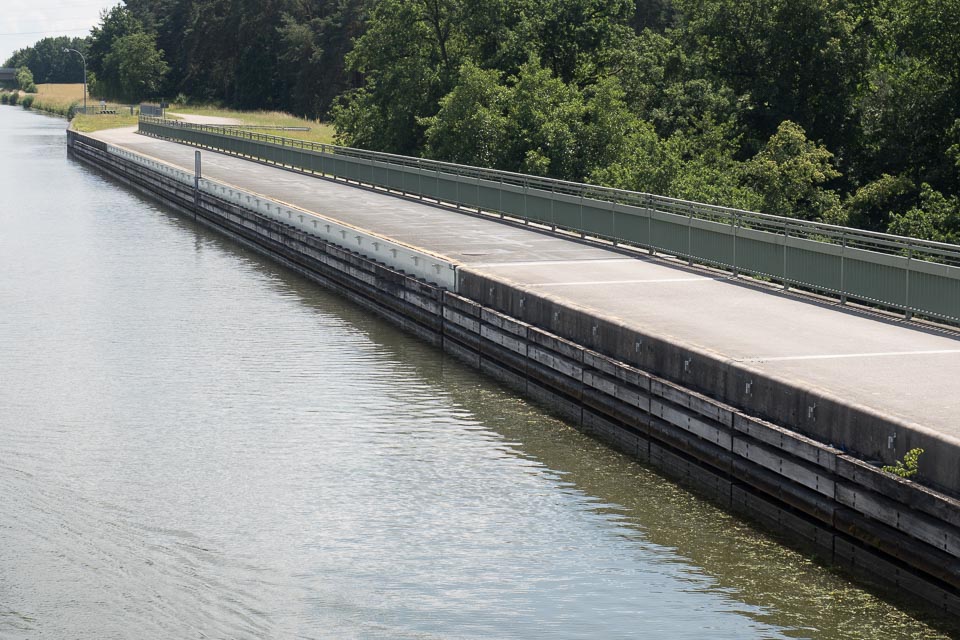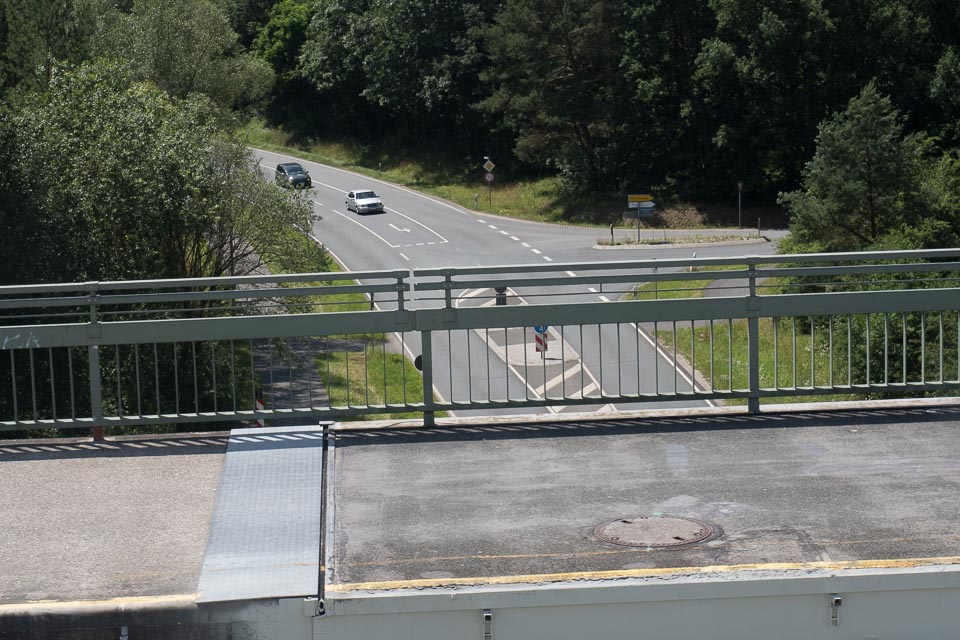Having passed the European Continental Divide, we are entering a lock which will lower the ship. I was standing on the top deck clicking away when one of the crewmen tapped me on the shoulders and asked me to sit down. As we got closer to the bridge at the entrance to the lock, it became evident that there would not be enough clearance if I remained standing.
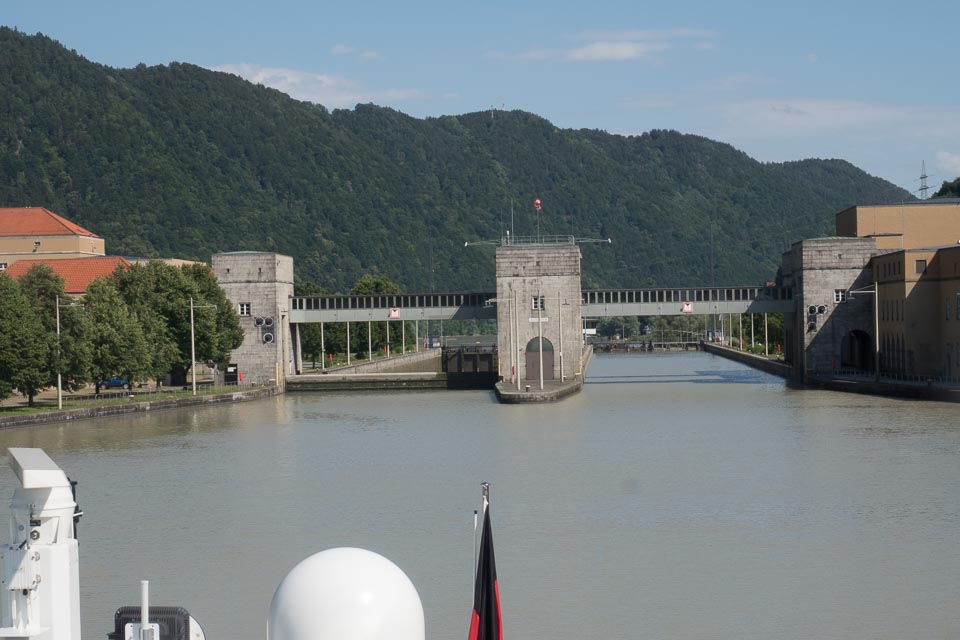
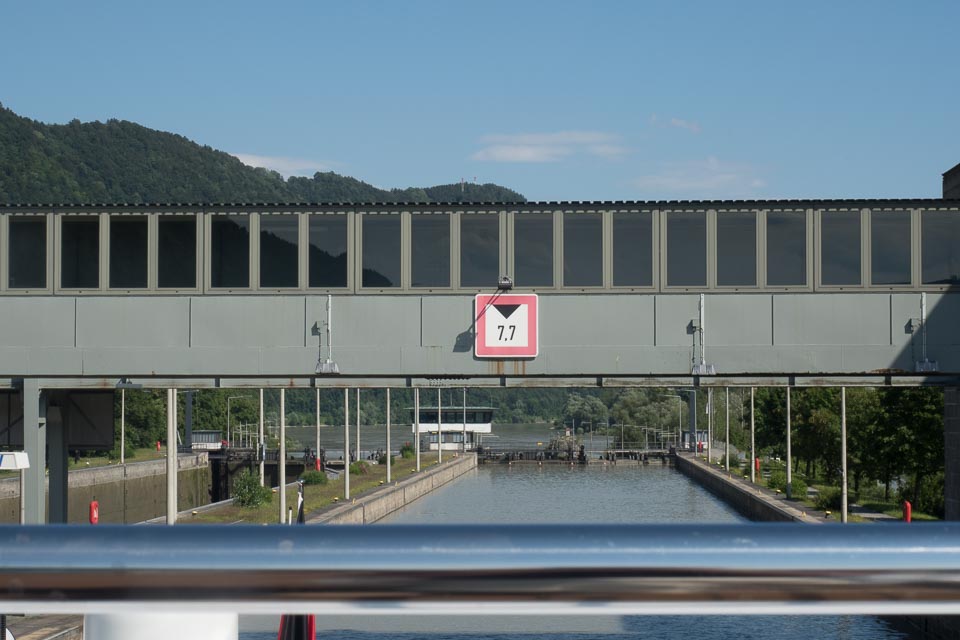
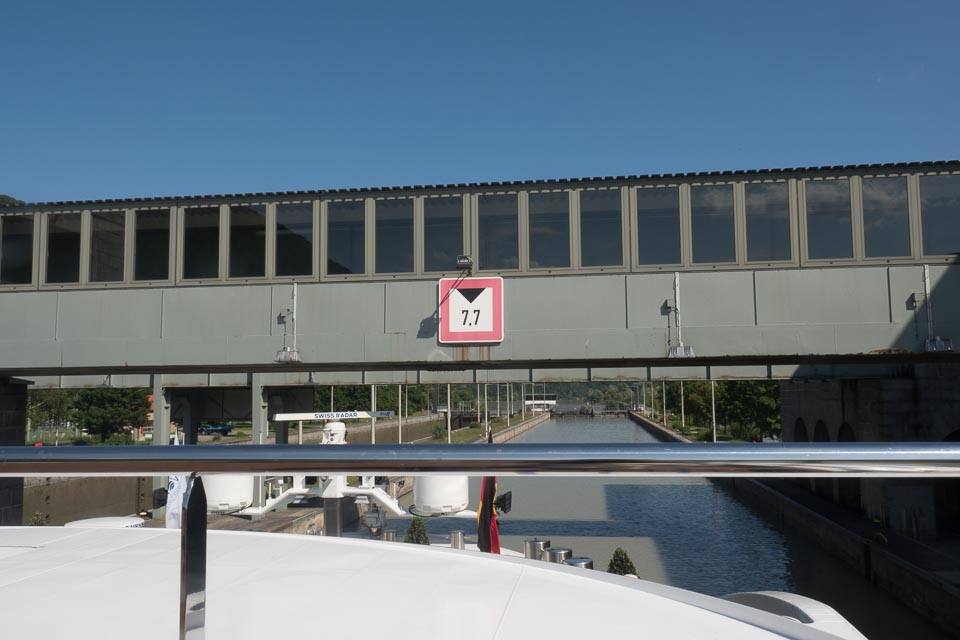
You can see the passenger safety railing in front of me. If I had been standing, clonk on that bridge!
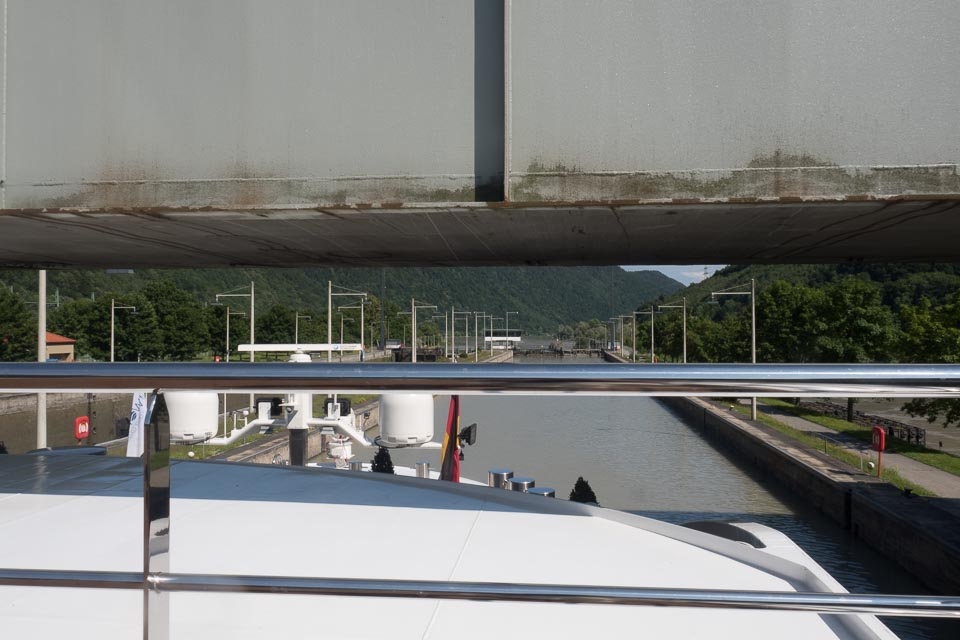
After we were lowered, the lock gates begin opening.
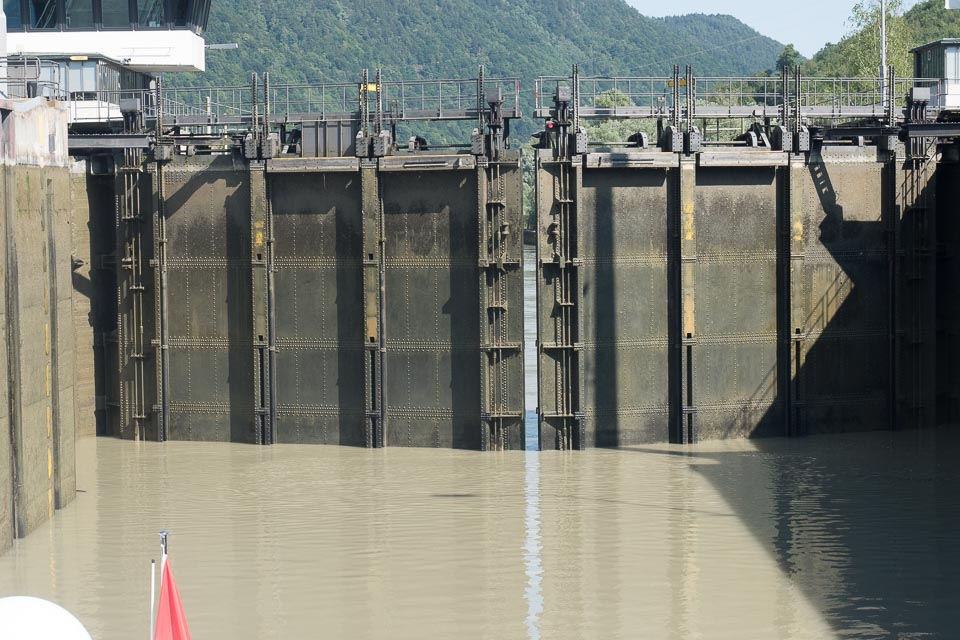
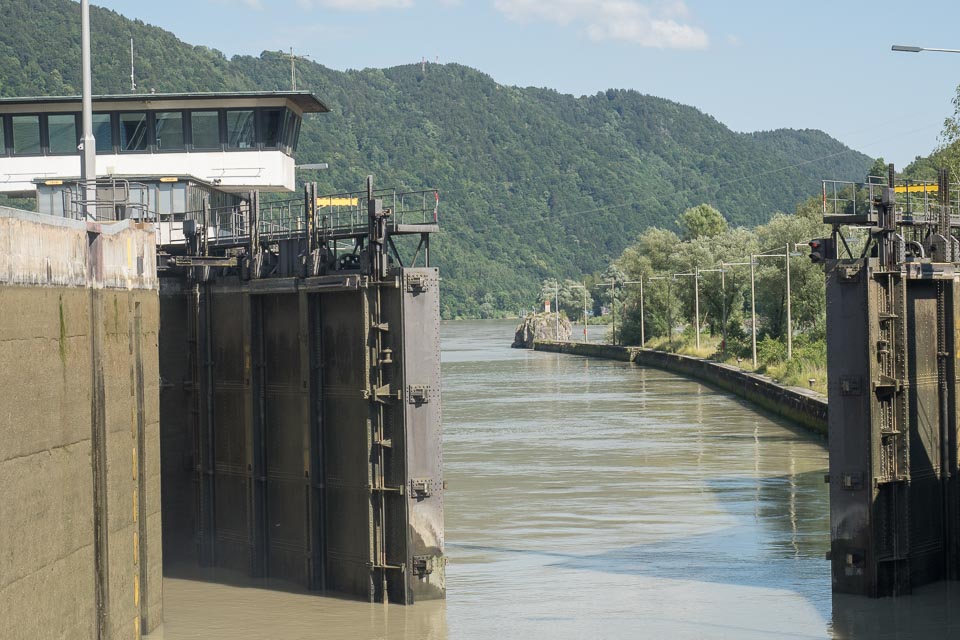
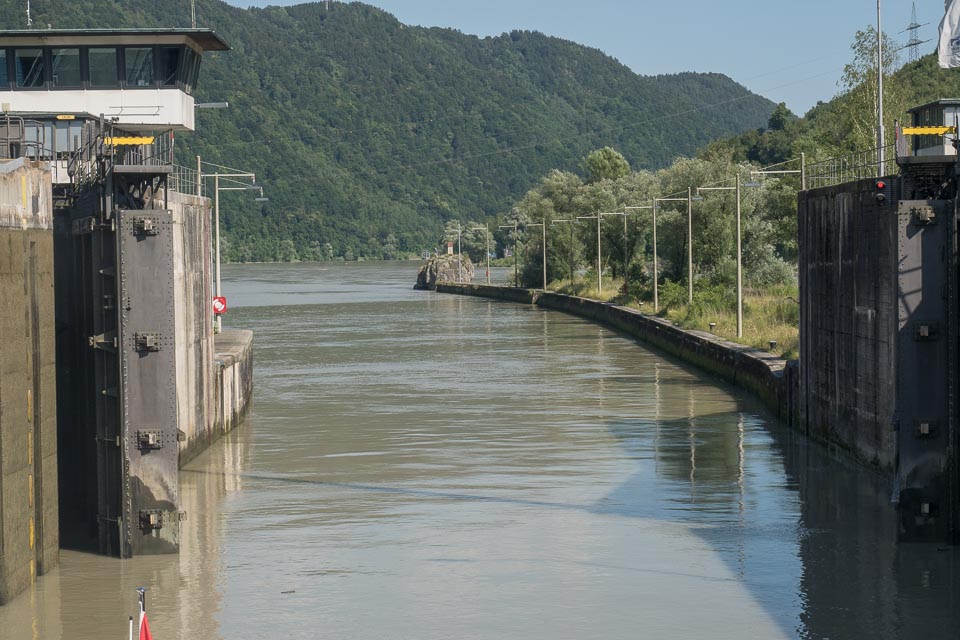
OK, so how does a lock work. Believe it or not, there is no pumping involved during each individual raising or lowering. The lock has a system of holding tanks positioned at the appropriate level. When a ship is being raised, it enters the lock, the gates are closed and a series of valves are opened sequentially to allow water to flow from the holding tanks into the lock, thus raising the ship. When the boat is at the level of the highest tank, valves are opened to equalize the level in the lock with that of the level to which the ship is being raised. The process is reversed when a ship is lowered, thereby placing water back in the tanks for use when the next ship is raised.
There is some loss of water in each evolution when the final equalization occurs, so there is a system that is constantly replacing that water, either pumping it up from below or supplying from another source.
A set of holding tanks:
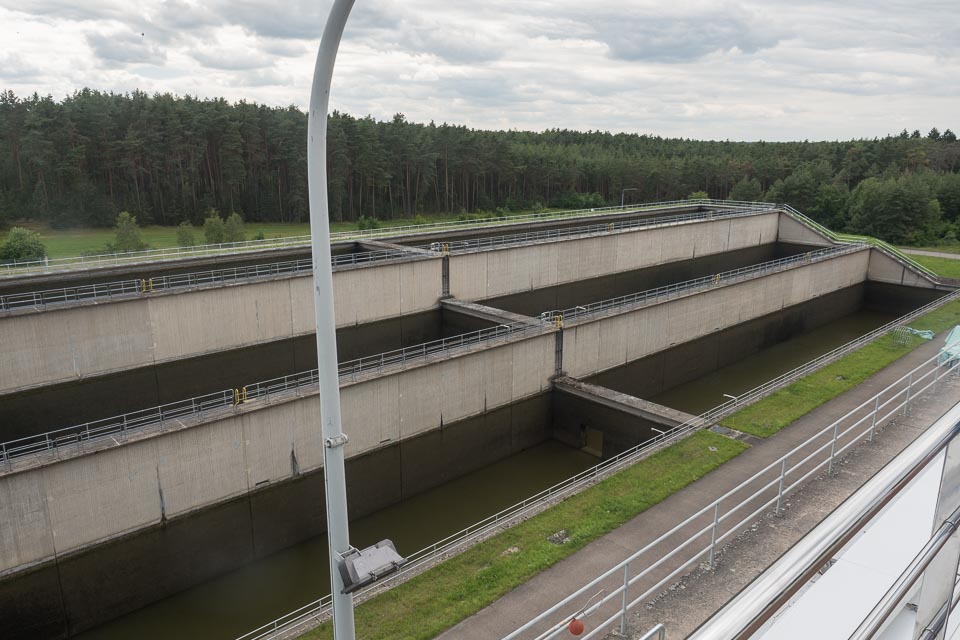
We're going along and you realized that the canal is considerably higher than the surrounding country side. There is a road down there with a bicyclist on it. Where did he come from? He came from under the canal. Yes, the canal goes across a bridge (aqueduct) over the road!
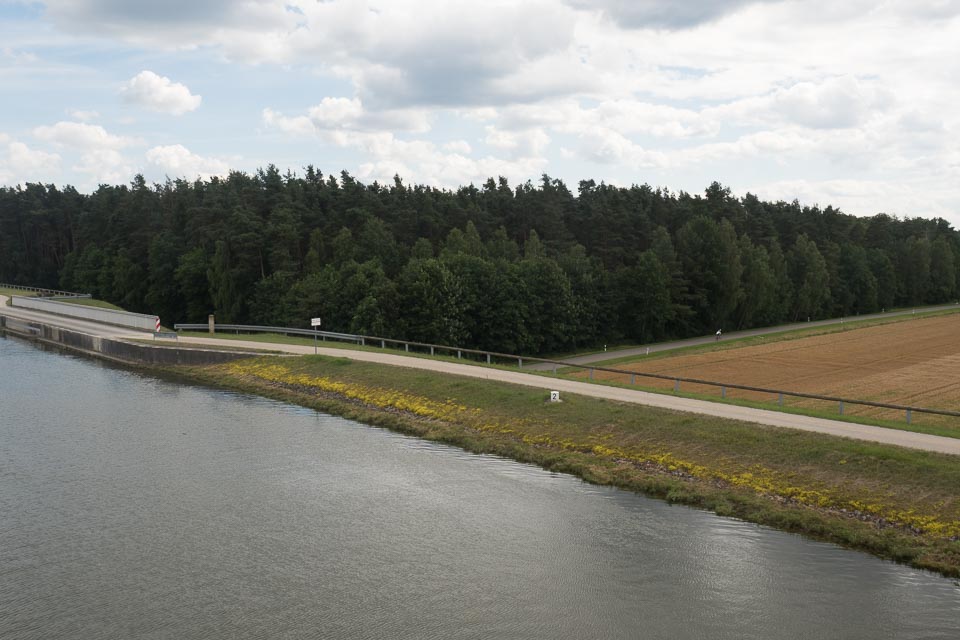
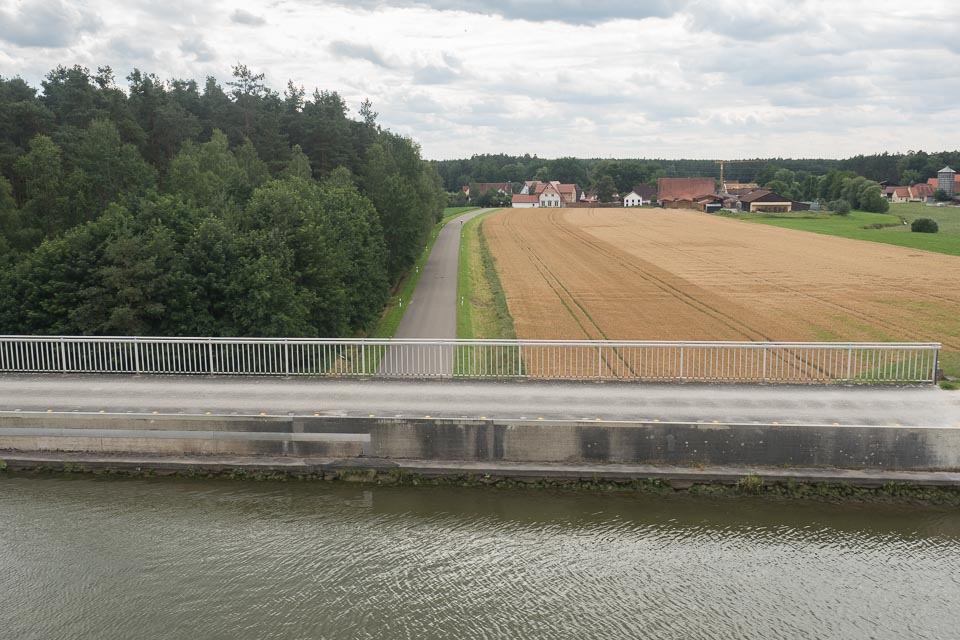
And here is another one that's a little more dramatic with auto traffic down below.
